Before reviewing the New York area Tillinghast courses, I would point out that his best design might be one of his earliest efforts - San Francisco Golf Club. Tillinghast's major New York area courses are: Winged Foot West (ranked #18 in the world), Bethpage Black (ranked #30 in the world), Baltusrol Lower (ranked #45 in the world), Quaker Ridge (ranked #61 in the world), Winged Foot East (ranked #66 in the world), and Somerset Hills (ranked #69 in the world). Not surprisingly, Tillinghast did a lot of his work in the New York area since his practice was based in New York City and Englewood, New Jersey. Tillinghast was a legendary figure. He never went to college and used to walk around the course sites he was designing with a pistol and a bottle of booze.
 A.W. Tillinghast
A.W. Tillinghast Bethpage Black
The only public course of the six, Bethpage Black is the clearly superior of the New York area courses. It is built on the hilliest terrain of all his local courses and has the most variety. The 4th hole at Bethpage Black (pictured below) is a par five with three levels of elevation and is unquestionably one of the best in the world. A dog-leg left, you have to hit three good shots to get on the green. And you have to hit them to the appropriate side of the fairway, the right side being the more favorable coming in on your third shot. This great hole is immediately followed by the 5th hole, a very hard par four where you need to hit the ball a good 220 yards, albeit, downhill, to hit the fairway. Good luck if the wind is blowing at you as it was when I played. Your second shot plays very hard uphill. The beauty of the hole, among its visual splendor, is that the best shot off the tee should be played left to right and the best shot to the green should be played right to left.
The world-class par five 4th at Bethpage Black
The difficult 5th at Bethpage from the tee box
Bethpage doesn't have an easy (or a bad) hole on the course. Another beautiful example of Tillinghast's design style is the par four sixth which plays 408 yards from the back. The tee shot is blind and the second shot is down hill to this well protected, beautiful green guarded by a swale.
Bethpage Black's sixth green
Bethpage doesn't feature any par three's where you hit a short iron. The 161 yard par three fourteenth is as close as you'll get to an easy shot. If you consider a green this well bunkered easy, that is.
Bethpage Black's par three 14th hole
The fifteenth hole at Bethpage is a 470 yard par four that plays MUCH longer than the yardage indicates. It is not a terribly difficult fairway to hit, but the second shot plays as uphill as any shot you will ever play. It's almost straight up-hill. Definitely one of the hardest shots I have had to hit (and hit and hit) thus far playing the top 100. To give you some sense of scale, the green sits about four stories above the level of the fairway.
The exceedingly difficult 15th hole at Bethpage Black
I didn't experience any of the legendary waiting in line that the course is famous for. Nor did I have to sleep in my car the night before. I played with a friend who is a New York state resident and can book tee times up to a week in advance. I would comment that the Long Island male, though, is a unique breed. They are a cross between two distinct and not necessarily complimentary personality traits. Half the time charming, funny and entertaining and the other half in-your-face obnoxious. Staying to have a beer in the clubhouse after the round is mandatory so you can soak up the true attitude of the Long Island male in all his regal splendor. You will no doubt remember it.
Winged Foot
The opposite end of the universe from Bethpage from a social status standpoint is the Winged Foot Golf Club located above New York City in Westchester County. Along with St. Andrews, Pebble Beach and Pinehurst, it is an undisputed golf Mecca. When you turn off Mamaroneck road, Winged Foot has an impressive winding entry drive and a dramatic, beautiful clubhouse that sits in the middle of the site surrounded by tall trees. You know you are someplace special when you arrive at Winged Foot.

The fifth green at Winged Foot West
Winged Foot has perfected that uniquely American art of the country club. There is a ritualized process to everything about the club. You arrive and the caddie master takes your clubs out of your trunk and welcomes you. After you park, you go into the locker room where the attendant organizes a locker for you and offers to change your spikes if needed. While playing, he cleans your street shoes off. Next, your caddie awaits to guide you around the course. After the round, you enjoy some food and drink in the grill room where the elegant wooden boards proclaim the past winners of championships held at the course. You are served by employees that have perfected the art of service and making you feel at home. Winged Foot is known for being very generous with its employees, many of whom have been in long service at the club and are treated like family. When Henry Longhurst wrote "one of the great unpurchasable assets in any golf club is the continuity of staff", he must have been thinking of Winged Foot.

The entry drive at Winged Foot
Winged Foot is the only club with the distinction of having two courses ranked in the top 100. I played the East and West courses at Winged Foot on different days and at different times of the year: The West on a brilliant summer day. The East on a cool, drizzly, fall day. Both times I very much enjoyed sitting around the clubhouse, the first time on the outdoor patio, under the awning, with its signature green-and-white stripes near the 18th green, at the end of a great day's golf. The second time, in front of the over-sized fireplace in the grill room with the fire crackling as the outside temperature dropped and a slight drizzle was falling. Sitting in that room with the dark woods and rich tones is a nice way to take the chill off and savor the overall Winged Foot experience.

Winged Foot Clubhouse
Despite the grandeur and majesty of the club, however, I would not rank the West Course at Winged Foot as one of my personal favorites. After the round as I tried to think back about the holes, many of them blend together as being tree-lined par fours and fives with slight doglegs. I know certain fellow aficionados and technical analysts pile on to anyone who doesn't love Winged Foot West. They will sight how the genius of the course is in the green complexes, and I understand how dramatic and artful they are. But even if you take that as given, it leaves 80% of the golf course as being not all that distinctive and somewhat repetitive.

The par three 10th hole at Winged Foot West
I don't hate the West course. I think the par threes are among the best in the game, especially the 3rd and 10th holes. And the 11th hole is a very interesting and memorable hole. Sixteen is also quite a good hole as well. Thus far, it is my only eagle playing the top 100. Overall, I didn't come away awe-struck by the West Course. When a course ranks in the top 25 in the world, I think it should have a distinctiveness that jumps out at you like at Merion, Sand Hills, National Golf Links or Crystal Downs.
Even if you disagree with my assessment of the West Course, you must admit, points are to be subtracted from any club that has Donald Trump as a member.
Baltusrol
In the same vein, Richard Nixon was a one-time member of Baltusrol. The club is also old, exclusive and proper and like Winged Foot has a brilliant club-house. Baltusrol, along with Cypress Point, Augusta, Los Angeles Country Club and San Francisco Golf Club requires long pants to play, although they recently loosened up the rules so that you can wear shorts between the 4th of July and Labor Day. The Lower course at Baltusrol is a lot like Winged Foot West. A lot of relatively straight tree-lined holes without much variety, in my view. Again, yes, interesting and challenging greens, which is why the USGA likes both courses.
These two courses are frequent hosts to major championships and have revered history and no doubt I'm missing something, but to me, they lack that special quality that distinguishes them from some of the other really good and interesting courses on the list. Both get an A+ for conditioning and fast greens, but I wouldn't put either on my short list of courses to play again quickly. Bethpage Black is a course I would return to. It has better terrain, more change in elevation, a more varied and interesting routing and is a more imaginative design.
The East Course at Winged Foot, by comparison, is an under-rated course, especially compared to the West. I found that the East Course had more shot variety and more interesting holes. I especially liked the par three 13th hole with its elevated green and massive fingered bunkering.
On my own personal rating scale I would place the courses in a different order in the world rankings and rank the West Course somewhere in the thirties or forties and the East in the fifties. If I returned to Winged Foot, I would play the East course again ahead of the West. I would rank any number of courses ahead of both Winged Foot West and Baltusrol Lower including Carnoustie (#26), San Francisco (#27), Kingsbarns (#65), Sunningdale Old (#44) and Royal St. George's (#32), to name a few.
Like at Baltimore Five Farms, Quaker Ridge and Somerset Hills, I feel that some of Tillies best work was done on courses that are not as well known as those that play host to major championships.

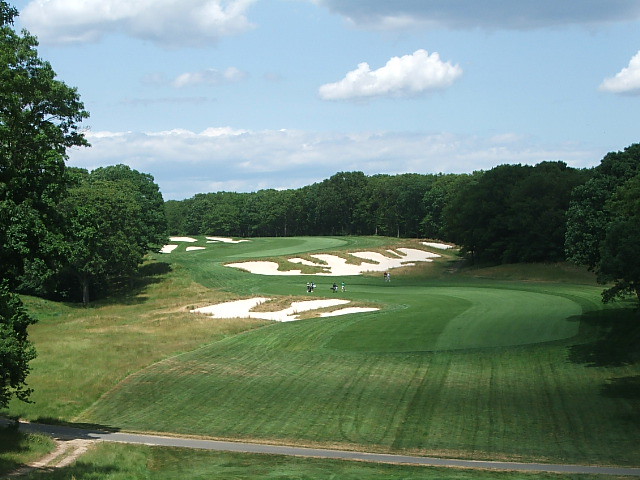
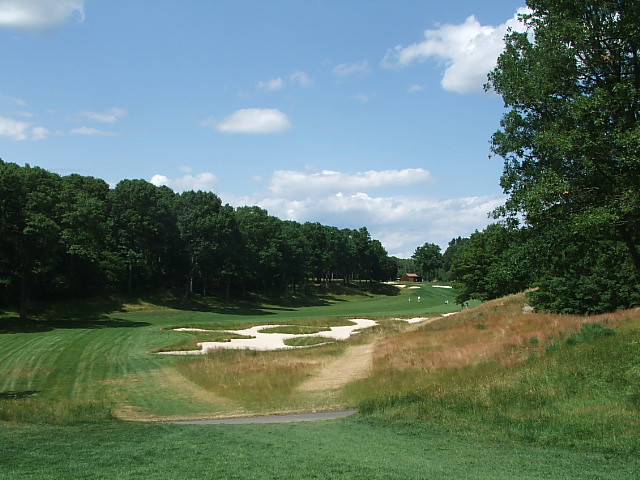
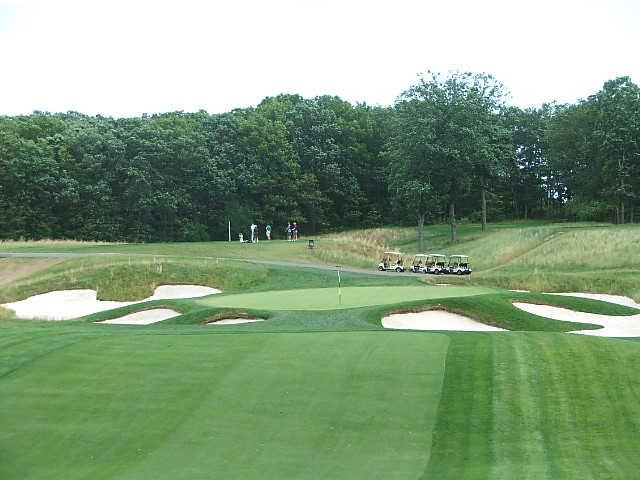
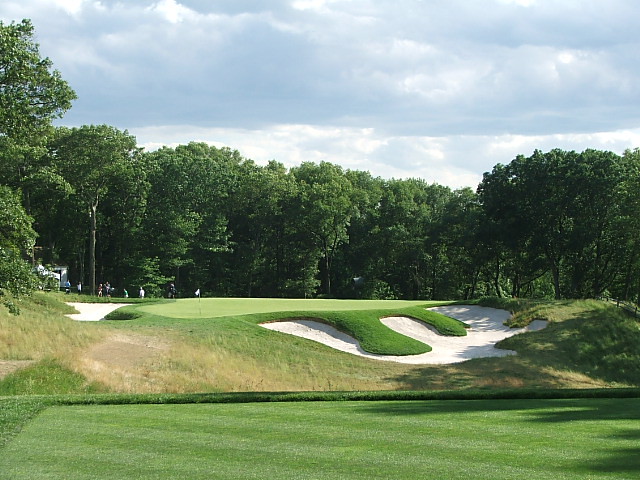
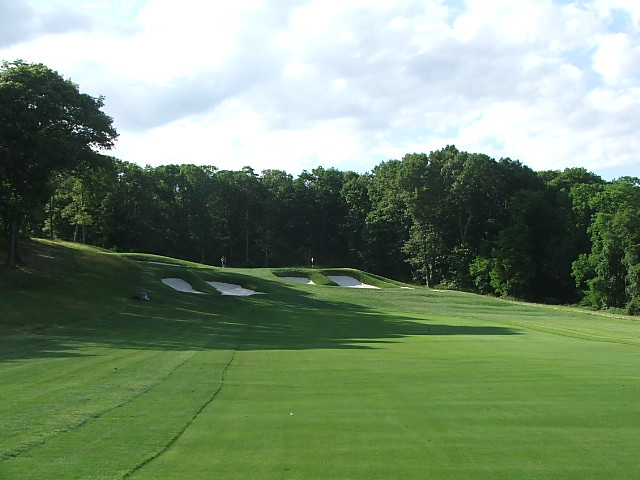

No comments:
Post a Comment